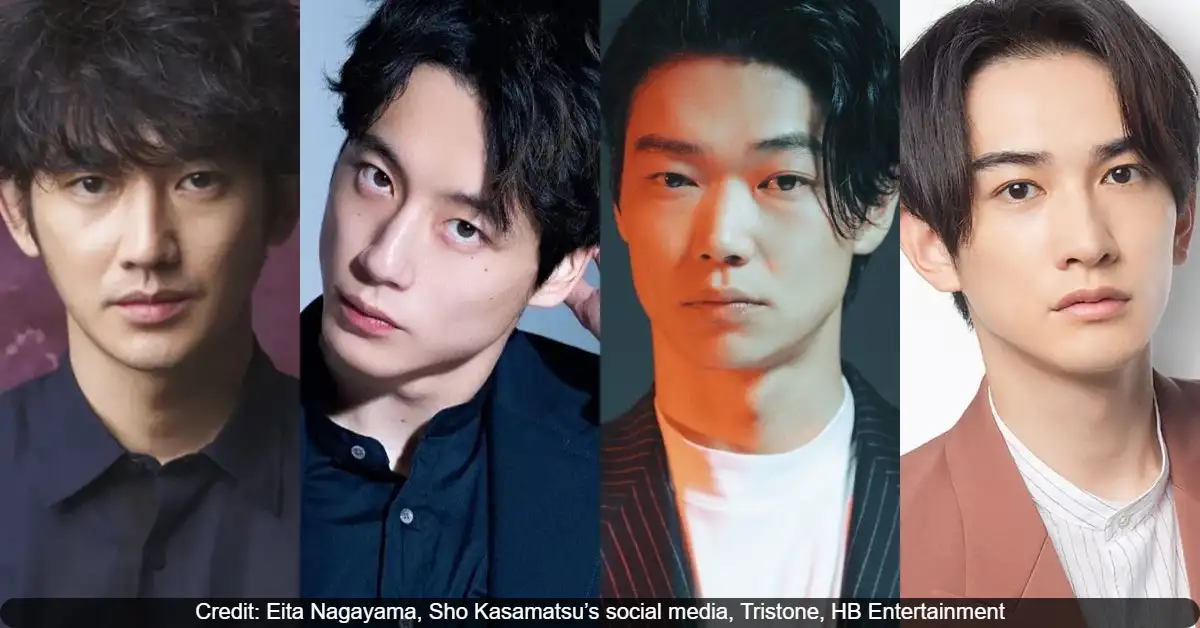In recent years, viewers of Korean dramas might have noticed a surprising trend: famous Japanese actors are appearing more frequently in K-dramas. From leading roles to special appearances, these cross-border collaborations are becoming common. This shift is not accidental but stems from strategic industry changes, evolving viewer preferences, and deeper cultural exchanges between Japan and South Korea. Let’s explore why this is happening and what it means for the future of entertainment.
Strategic Partnerships Between Streaming Platforms
Major streaming services like Netflix, Disney+, and Viu are investing heavily in K-dramas to attract global audiences. These platforms aim to create content that appeals to viewers in both South Korea and Japan, two of the largest markets for Asian entertainment. By casting well-known Japanese actors, they can draw in Japanese fans who are already familiar with these stars. For example, the upcoming drama Tempest features Gianna Jun and Gang Dong Won alongside Hollywood actors like Michael Gaston and Christopher Gorham. This international approach helps streaming services expand their subscriber base across Asia and beyond .
Another example is the historical drama The Murky Stream, which stars Rowoon (formerly of SF9) and Shin Ye Eun. While Rowoon is Korean, the involvement of actors with international appeal highlights the push for cross-market attraction. These partnerships are often backed by data showing that dramas with diverse casts perform better in multiple countries .
The Influence of Webtoons and Adaptations
Many K-dramas are adapted from webtoons or novels that already have a fan base in Japan. When these stories are brought to life, producers sometimes cast Japanese actors to make the adaptations feel more authentic or to pay homage to the original source material. For instance, Mercy For None, an action series adapted from the webtoon “Plaza Wars: Mercy for None,” features So Ji Sub in a lead role. While So Ji Sub is Korean, the trend extends to Japanese actors in other similar projects .
Additionally, adaptations of Japanese stories, like the upcoming K-drama As You Stood By (based on the Japanese novel Naomi to Kanako), naturally involve cultural elements that make Japanese actors a fitting choice. This allows for a smoother blend of narratives and character portrayals that resonate with audiences in both countries .
Focus on Global Storylines and Themes
Many modern K-dramas feature stories set in international contexts or involving cross-cultural relationships. For example, Bogotá: City of the Lost tells the story of a Korean family struggling to survive in Colombia after the 1997 Asian Financial Crisis. While it stars Song Joong Ki, such global settings create opportunities for actors from various backgrounds to participate .
Similarly, When the Stars Gossip is a space-themed romance involving an astronaut and a space tourist, played by Lee Min Ho and Gong Hyo Jin. While the main cast is Korean, the premise opens doors for international collaboration. As K-dramas continue to explore diverse genres and settings, the inclusion of Japanese actors becomes a natural fit for stories that transcend national borders .
Efforts to Strengthen Cultural Ties
The relationship between Japan and South Korea has seen improvements in recent years, especially in the cultural sector. Both governments and private organizations have been promoting exchanges through events like joint film festivals and cultural fairs. These efforts have made it easier for actors from both countries to work together. For example, the upcoming drama 5 September: My Youth stars Song Joong Ki and Chun Woo Hee in a story about rekindled love. While the cast is Korean, the theme of reconnecting after time apart mirrors the renewed cultural ties between the two nations .
Additionally, talent agencies in South Korea and Japan are forming partnerships to facilitate collaborations. These agencies help Japanese actors audition for roles in K-dramas and vice versa, creating a more integrated entertainment industry .
Fan Reactions and Market Demand
Fans in both countries have responded positively to these collaborations. Social media platforms are filled with excitement when a new casting announcement involves a popular Japanese actor. For example, the inclusion of Takeru Satoh in the Japanese drama Glass Heart (streaming on Netflix) demonstrates how cross-border projects can generate buzz. While Glass Heart is a J-drama, its availability on Netflix allows it to reach K-drama fans, further blurring the lines between the two industries .
Viewers appreciate the fresh dynamics that Japanese actors bring to K-dramas, whether it’s a new acting style or a unique cultural perspective. This demand encourages producers to continue experimenting with international casts .
Upcoming Projects to Watch
Several upcoming K-dramas feature Japanese actors or collaborations. For instance, Can This Love Be Translated stars Kim Seon Ho and Go Youn Jung as a interpreter and a celebrity, respectively. While the main cast is Korean, the theme of language and communication hints at potential international elements .
Another example is Trigger, an action thriller about illegal firearms in South Korea, starring Kim Nam Gil and Kim Young Kwang. While the cast is Korean, the global relevance of the topic could pave the way for future cross-border projects .
Although the search results do not provide specific examples of Japanese actors in upcoming K-dramas, the trend is evident in the industry’s move toward more inclusive and globally appealing content.
The Role of Awards and Recognition
Awards shows and film festivals in Asia are increasingly recognizing talent from both countries. For example, the Baeksang Arts Awards in South Korea and the Japan Academy Film Prize in Japan have seen nominees from across Asia. This recognition encourages actors to take on roles in international projects, knowing that their work will be appreciated beyond their home country .
As these awards become more inclusive, they help break down barriers and create opportunities for collaboration between Japanese and Korean actors.
Challenges and Considerations
Despite the positive trend, there are challenges. Language barriers and differences in acting styles can sometimes make collaborations difficult. However, many Japanese actors are learning Korean to better fit into K-drama productions, and vice versa. Additionally, producers are hiring language coaches and cultural consultants to ensure smooth workflows .
Another consideration is the historical and political tensions between the two countries. While cultural exchanges are improving, producers must still navigate sensitive topics carefully to avoid backlash .
The Future of Japanese Actors in K-Dramas
The trend of Japanese actors appearing in K-dramas is likely to continue as the entertainment industry becomes more globalized. Streaming platforms will keep investing in content that appeals to multiple markets, and producers will continue to seek out talented actors who can bring international appeal to their projects. While the search results do not provide specific future projects, the current pattern suggests that viewers can expect more cross-border collaborations in the coming years .
This trend benefits everyone: viewers get to enjoy more diverse stories, actors gain access to new opportunities, and the entertainment industry as a whole becomes more interconnected.
Also Read: The Wrong Paris Soundtrack: Every Song in the Netflix Movie















